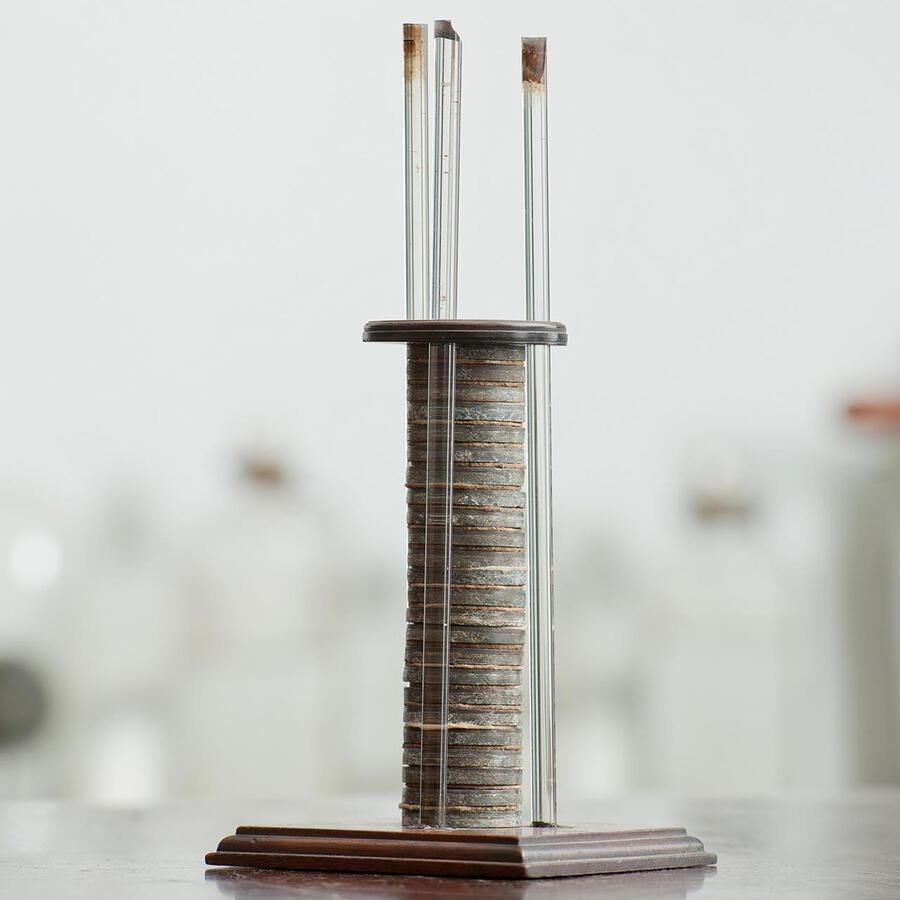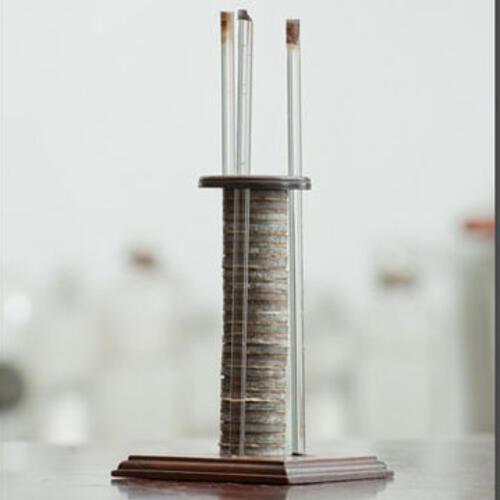Date: pre-1814
Place made: Milan, Italy
Alternative name: Early battery
Materials: Wood, glass rods, blotting paper, metal discs
Measurements: H: 232mm, W: 102mm, D: 102mm

Description
An early example of a chemical battery made up of a stack of plates of two different metals on a wooden base held in place by three glass rods and sandwiched with blotting paper. To use the battery the paper was soaked in acid, creating an electric current between the top and bottom of the battery.
Humphry Davy made his first major scientific discoveries at the Royal Institution in the new field of electrochemistry in the early 1800s. This science stemmed from Alessandro Volta's invention of the electric battery at the end of the eighteenth century.
Experimenting with these batteries Davy developed the first coherent theory of electrochemical action: for the first time he isolated chemical elements including sodium and potassium. His chief theoretical argument was that all chemical action was electrical.
From October 1813 to April 1815, Davy, along with Michael Faraday, toured the continent visiting major laboratories. In June 1814 they met Volta in Milan where he gave Faraday this battery. This was as if the inventor of the electric battery passed on the torch of electrical research to Faraday.
Where can I view this?
This object is currently on display on the Lower Ground Floor of the Faraday Museum.

